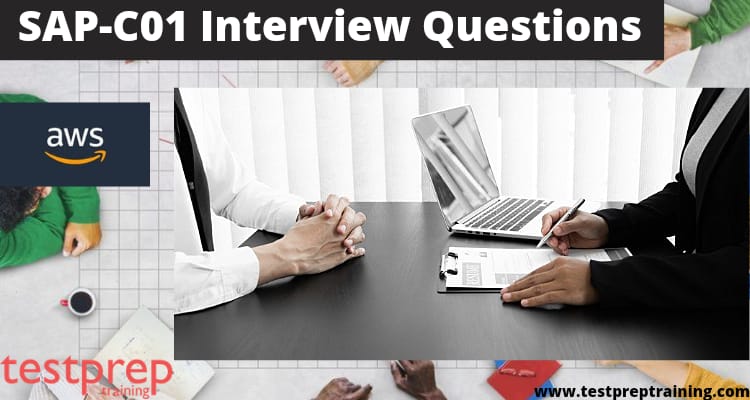AWS Certified Solutions Architect Professional (SAP-C02)
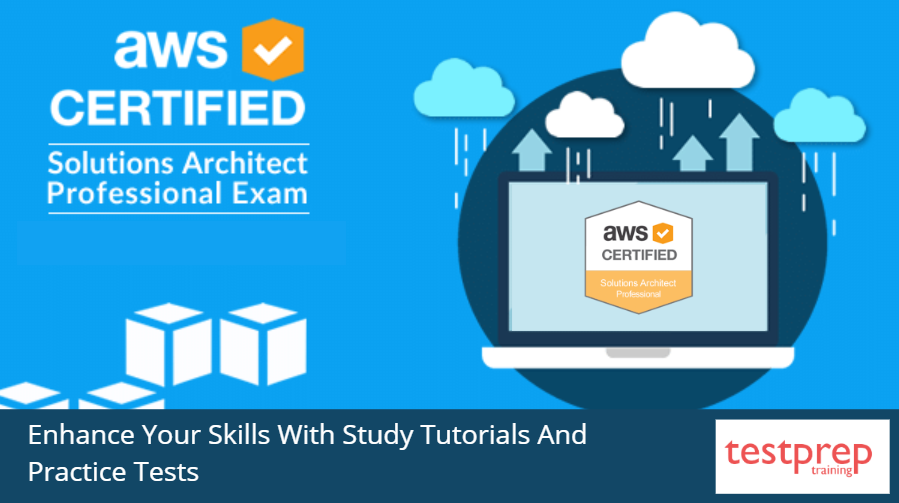
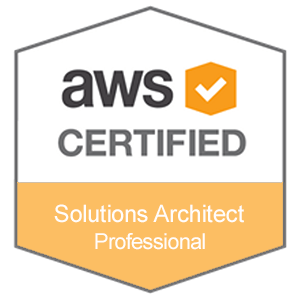
AWS Certification helps learners gain credibility and confidence by demonstrating their cloud skills with an industry-recognized credential, and it also helps employers find qualified people to lead cloud initiatives using AWS. Individuals who fulfill the function of Solutions Architect Professional should take the AWS Certified Solutions Architect Professional (SAP-C02) exam. This test verifies advanced technical knowledge and competence in developing distributed applications and systems on the Amazon Web Services platform. This accreditation also improves your earning potential. The average annual salary for an AWS Certified Solutions Architect Professional is $118,266.
Skills Validated
The AWS Certified Solutions Architect Professional Exam validates the skills of the candidates in the following
- Designing and deploying dynamically scalable, highly available, fault-tolerant, and reliable applications on AWS
- Selecting the appropriate AWS services in designing and deploying an application based on the given requirements
- Migrating complex, multi-tier applications on AWS
- Designing and deploying enterprise-wide scalable operations on AWS
- Implementing cost-control strategies
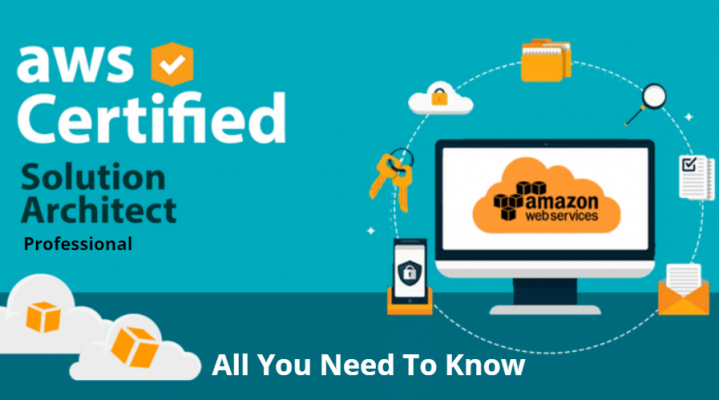
Recommended AWS and General IT Knowledge and Experience
AWS Certified Solutions Architect Professional Prerequisites are:
- 2 or more years of hands-on experience designing and deploying cloud architecture on AWS
- Ability to evaluate cloud application requirements and make architectural recommendations for
- implementation, deployment, and provisioning applications on AWS
- Ability to provide best practice guidance on the architectural design across multiple applications and
- projects of the enterprise
- Familiarity with a scripting language
- Familiarity with Windows and Linux environments
- Familiarity with AWS CLI, AWS APIs, AWS CloudFormation templates, the AWS Billing Console, and the AWS Management Console
- Explain and apply the five pillars of the AWS Well-Architected Framework
- Map business objectives to application/architecture requirements
- Design a hybrid architecture using key AWS technologies (e.g., VPN, AWS Direct Connect)
- Architect a continuous integration and deployment process
AWS Certified Solutions Architect Professional Exam Format
Before you begin your preparation let’s get all the details.
- The AWS Certified Solutions Architect Professional Exam Questions are in Multiple Choice Format.
- You get 180 minutes to complete the 75 questions of this exam.
- Moreover, the AWS Certified Solutions Architect Professional Exam Cost is $300 USD.
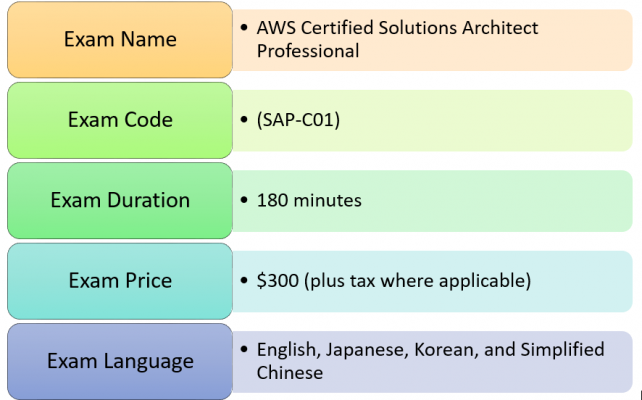
Exam Prerequisites
- 2+ years of experience as a professional Solution Architect operating and maintaining AWS
- Technical expertise and in-depth knowledge of the AWS platform for developing distributed apps and systems
Exam Retake Policy
If you want to retake the AWS Solutions Architect Professional exam then you must wait for 14 days before becoming eligible for retaking the exam. You can give the exam as many times until you have passed the certification. However, you must pay the full exam fee for each attempt you take.
Want to prepare for the exam interview? Check out SAP-C02 Interview Questions.
Course Outline
AWS Certified Solutions Architect Professional (SAP-C02) Course covers the following domains:
Domain 1: Understanding to Design Solutions for Organizational Complexity
1.1 Explain Architect network connectivity strategies.
- AWS global infrastructure
- AWS networking concepts (for example, Amazon VPC, AWS Direct Connect, AWS VPN, transitive routing, AWS container services)
- Hybrid DNS concepts (for example, Amazon Route 53 Resolver, on-premises DNS integration)
- Network segmentation (for example, subnetting, IP addressing, connectivity among VPCs)
- Network traffic monitoring
Skills Evaluated
- Learn to evaluate connectivity options for multiple VPCs
- Learn to evaluate connectivity options for on-premises, co-location, and cloud integration
- Learn to select AWS Regions and Availability Zones based on network and latency requirements
- Learn to troubleshoot traffic flows by using AWS tools
- Learn to utilize service endpoints for service integrations
1.2 Explain security controls
- AWS Identity and Access Management (IAM) and AWS Single Sign-On
- Route tables, security groups, and network ACLs
- Encryption keys and certificate management (for example, AWS Key Management Service [AWS KMS], AWS Certificate Manager [ACM])
- AWS security, identity, and compliance tools (for example, AWS CloudTrail, AWS Identity and Access Management Access Analyzer, AWS Security Hub, Amazon Inspector)
Skills Evaluated
- Learn to evaluate cross-account access management
- Learn to integrate with third-party identity providers
- Learn to deploy encryption strategies for data at rest and data in transit
- Learn to develop a strategy for centralized security event notifications and auditing
1.3 Explain to design reliable and resilient architectures.
- Recovery time objectives (RTOs) and recovery point objectives (RPOs)
- Disaster recovery strategies (for example, using AWS Elastic Disaster Recovery [CloudEndure Disaster Recovery], pilot light, warm standby, and multi-site)
- Data backup and restoration
Skills Evaluated
- Learn to design disaster recovery solutions based on RTO and RPO requirements
- Learn to implement architectures to automatically recover from failure
- Learn to develop the optimal architecture by considering scale-up and scale-out options
- Learn to design an effective backup and restoration strategy
1.4 Explain Design a multi-account AWS environment.
- AWS Organizations and AWS Control Tower
- Multi-account event notifications
- AWS resource sharing across environments
Skills Evaluated
- Learn to evaluate the most appropriate account structure for organizational requirements
- Learn to recommend a strategy for central logging and event notifications
- Learn to develop a multi-account governance model
1.5 Explain to determine cost optimization and visibility strategies.
- AWS cost and usage monitoring tools (for example, AWS Trusted Advisor, AWS Pricing Calculator, AWS Cost Explorer, AWS Budgets)
- AWS purchasing options (for example, Reserved Instances, Savings Plans, Spot Instances)
- AWS right-sizing visibility tools (for example, AWS Compute Optimizer, Amazon S3 Storage Lens)
Skills Evaluated
- Learn to monitor cost and usage with AWS tools
- Learn to develop an effective tagging strategy that maps costs to business units
- Learn to understand how purchasing options affect cost and performance
Domain 2: Understand to Design for New Solutions
2.1 Explain to design a deployment strategy to meet business requirements
- Infrastructure as code (IaC) (for example, AWS CloudFormation)
- Continuous integration/continuous delivery (CI/CD)
- Change management processes
- Configuration management tools (for example, AWS Systems Manager)
Skills Evaluated
- Learn to determine an application or upgrade path for new services and features
- Learn to select services to develop deployment strategies and implement appropriate rollback mechanisms
- Learn to adopt managed services as needed to reduce infrastructure provisioning and patching overhead
- Learn to make advanced technologies accessible by delegating complex development and deployment tasks to AWS
2.2 Explain to Design a solution to ensure business continuity.
- AWS global infrastructure
- AWS networking concepts (for example, Route 53, routing methods)
- RTOs and RPOs
- Disaster recovery scenarios (for example, backup and restore, pilot light, warm standby, multi-site)
- Disaster recovery solutions on AWS
Skills Evaluated
- Learn to configure disaster recovery solutions
- Learn to configure data and database replication
- Learn to perform disaster recovery testing
- Learn to architect a backup solution that is automated, is cost-effective, and supports business continuity across multiple Availability Zones and/or AWS Regions
- Learn to design an architecture that provides application and infrastructure availability in the event of a disruption
- Learn to leverage processes and components for centralized monitoring to proactively recover from system failures
2.3 Explain to determine security controls based on requirements.
- IAM
- Route tables, security groups, and network ACLs
- Encryption options for data at rest and data in transit
- AWS service endpoints
- Credential management services
- AWS managed security services (for example, AWS Shield, AWS WAF, Amazon GuardDuty, AWS Security Hub)
Skills Evaluated
- Learn to specify IAM users and IAM roles that adhere to the principle of least privilege access
- Learn to specify inbound and outbound network flows by using security group rules and network ACL rules
- Learn to develop attack mitigation strategies for large-scale web applications
- Learn to develop encryption strategies for data at rest and data in transit
- Lean to specify service endpoints for service integrations
- Learn to develop strategies for patch management to remain compliant with organizational standards
2.4 Explain to design a strategy to meet reliability requirements.
- AWS global infrastructure
- AWS storage services and replication strategies (for example Amazon S3, Amazon RDS, Amazon ElastiCache) Multi-AZ and multi-Region architectures
- Auto scaling policies and events
- Application integration (for example, Amazon Simple Notification Service [Amazon SNS], Amazon Simple Queue Service [Amazon SQS], AWS Step Functions)
- Service quotas and limits
Skills Evaluated
- Learn to design highly available application environments based on business requirements
- Learn to leverage advanced techniques to design for failure and ensure seamless system recoverability
- Learn to implement loosely coupled dependencies
- Learn to operate and maintaining high-availability architectures (for example, application failovers, database failovers)
- Learn to leverage AWS managed services for high availability
- Learn to implement DNS routing policies (for example, Route 53 latency-based routing, geolocation routing, simple routing)
2.5 Explain Design a solution to meet performance objectives.
- Performance monitoring technologies
- Storage options on AWS
- Instance families and use cases
- Purpose-built databases
Skills Evaluated
- Learn to design large-scale application architectures for a variety of access patterns
- Learn to design an elastic architecture based on business objectives
- Learn to apply design patterns to meet performance objectives with caching, buffering, and replicas
- Learn to develop a process methodology for selecting purpose-built services for required tasks
- Learn to design a right-sizing strategy
2.6 Explain and determine a cost optimization strategy to meet solution goals and objectives.
- AWS cost and usage monitoring tools (for example, Cost Explorer, Trusted Advisor, AWS Pricing Calculator)
- Pricing models (for example, Reserved Instances, Savings Plans)
- Storage tiering
- Data transfer costs
- AWS managed service offerings
Skills Evaluated
- Learn to identify opportunities to select and right size infrastructure for cost-effective resources
- Learn to identify appropriate pricing models
- Learn to perform data transfer modeling and selecting services to reduce data transfer costs
- Learn to develop a strategy and implementing controls for expenditure and usage awareness
Domain 3: Understand to Continuous Improvement for Existing Solutions
3.1 Explain determine a strategy to improve overall operational excellence
- Alerting and automatic remediation strategies
- Disaster recovery planning
- Monitoring and logging solutions (for example, Amazon CloudWatch)
- CI/CD pipelines and deployment strategies (for example, blue/green, all-at-once, rolling)
- Configuration management tools (for example, Systems Manager)
Skills Evaluated
- Learn to determine the most appropriate logging and monitoring strategy
- Learn to evaluate current deployment processes for improvement opportunities
- Learn to prioritize opportunities for automation within a solution stack
- Learn to recommende the appropriate AWS solution to enable configuration management automation
- Learn to engineer failure scenario activities to support and exercise an understanding of recovery actions
3.2 Explain to determine a strategy to improve security.
- Data retention, data sensitivity, and data regulatory requirements
- Automated monitoring and remediation strategies (for example, AWS Config rules)
- Secrets management (for example, Systems Manager, AWS Secrets Manager)
- Principle of least privilege access
- Security-specific AWS solutions
- Patching practices
- Backup practices and methods
Skills Evaluated
- Learn to evaluate a strategy for the secure management of secrets and credentials
- Learn to auditi an environment for least privilege access
- Learn to review implemented solutions to ensure security at every layer
- Learn to review comprehensive traceability of users and services
- Learn to prioritize automated responses to the detection of vulnerabilities
- Learn to design and implementing a patch and update process
- Learn to design and implementing a backup process
- Learn to employ remediation techniques
3.3 Explain determine a strategy to improve performance.
- High-performing systems architectures (for example, auto scaling, instance fleets, and placement groups)
- Global service offerings (for example, AWS Global Accelerator, Amazon CloudFront, and edge computing services)
- Monitoring tool sets and services (for example, CloudWatch)
- Service level agreements (SLAs) and key performance indicators (KPIs)
Skills Evaluated
- Learn to translate business requirements to measurable metrics
- Learn to test potential remediation solutions and making recommendations
- Learn to propose opportunities for the adoption of new technologies and managed services
- Learn to assess solutions and applying right sizing based on requirements
- Learn to identify and examining performance bottlenecks
34 Explain determine a strategy to improve reliability
- AWS global infrastructure
- Data replication methods
- Scaling methodologies (for example, load balancing, auto scaling)
- High availability and resiliency
- Disaster recovery methods and tools
- Service quotas and limits
Skills Evaluated
- Learn to understand application growth and usage trends
- Learn to evaluate existing architecture to determine areas that are not sufficiently reliable
- Learn to remediate single points of failure
- Learn to enable data replication, self-healing, and elastic features and services
3.5 Identify opportunities for cost optimizations.
- Cost-conscious architecture choices (for example, utilizing Spot Instances, scaling policies, and right-sizing resources)
- Price model adoptions (for example, Reserved Instances, Savings Plans)
- Networking and data transfer costs
- Cost management, alerting, and reporting
Skills Evaluated
- Learn to analyze usage reports to identify underutilized and overutilized resources
- Learn to utilize AWS solutions to identify unused resources
- Learn to design billing alarms based on expected usage patterns
- Learn to investigate AWS Cost and Usage Reports at a granular level
- Learn to utilize tagging for cost allocation and reporting
Domain 4: Explain to accelerate Workload Migration and Modernization
4.1 Explain to select existing workloads and processes for potential migration.
- Migration assessment and tracking tools (for example, AWS Migration Hub)
- Portfolio assessment
- Asset planning
- Prioritization and migration of workloads (for example, wave planning)
Skills Evaluated
- Learn to complete an application migration assessment
- Learn to evaluate applications according to the seven common migration strategies (7Rs)
- Learn to evaluate total cost of ownership (TCO)
4.2 Explain to determine the optimal migration approach for existing workloads.
- Data migration options and tools (for example, AWS DataSync, AWS Transfer Family, AWS Snow Family, S3 Transfer Acceleration)
- Application migration tools (for example, AWS Application Discovery Service, AWS Application Migration Service [CloudEndure Migration], AWS Server Migration Service [AWS SMS])
- AWS networking services and DNS (for example, Direct Connect, AWS Site-to-Site VPN, Route 53)
- Identity services (for example, AWS SSO, AWS Directory Service)
- Database migration tools (for example, AWS Database Migration Service [AWS DMS], AWS Schema Conversion Tool [AWS SCT])
- Governance tools (for example, AWS Control Tower, Organizations)
Skills Evaluated
- Learn to select the appropriate database transfer mechanism
- Learn to select the appropriate application transfer mechanism
- Learn to select the appropriate data transfer service and migration strategy
- Learn to apply the appropriate security methods to migration tools
- Learn to select the appropriate governance model
4.3 Explain to determine a new architecture for existing workloads.
- Compute services (for example, Amazon EC2, AWS Elastic Beanstalk)
- Containers (for example, Amazon Elastic Container Service [Amazon ECS], Amazon Elastic Kubernetes Service [Amazon EKS], AWS Fargate, Amazon Elastic Container Registry [Amazon ECR])
- AWS storage services (for example, Amazon Elastic Block Store [Amazon EBS], Amazon Elastic File System [Amazon EFS], Amazon FSx, Amazon S3, Volume Gateway)
- Databases (for example, Amazon DynamoDB, Amazon OpenSearch Service [Amazon Elasticsearch Service], Amazon RDS, self-managed databases on Amazon EC2)
Skills Evaluated
- Learn to select the appropriate compute platform
- Learn to select the appropriate container hosting platform
- Learn to select the appropriate storage service
- Learn to select the appropriate database platform
4.4 Explain to determine opportunities for modernization and enhancements.
- Serverless compute offerings (for example, AWS Lambda)
- Containers (for example, Amazon ECS, Amazon EKS, AWS Fargate)
- AWS storage services (for example, Amazon S3, Amazon EFS)
- Purpose-built databases (for example, DynamoDB, Amazon Aurora Serverless, ElastiCache)
- Integration service (for example, Amazon SQS, Amazon SNS, Amazon EventBridge [Amazon CloudWatch Events], Step Functions)
Skills Evaluated
- Learn to identify opportunities to decouple application components
- Learn to identify opportunities for serverless solutions
- Learn to select the appropriate service for containers
- Learn to identify opportunities for purpose-built databases
- Learn to select the appropriate application integration service
Preparation Guide For The AWS Solutions Architect Professional (SAP-C02) Exam
AWS Certified Solutions Architect Professional Preparation are not easy given the vast syllabus. You need access to the right resources to pas the exam with flying colours. To help you choose the resources wisely we offer you the AWS Certified Solutions Architect Professional Exam Guide. This guide will keep you on the right track for the exam.
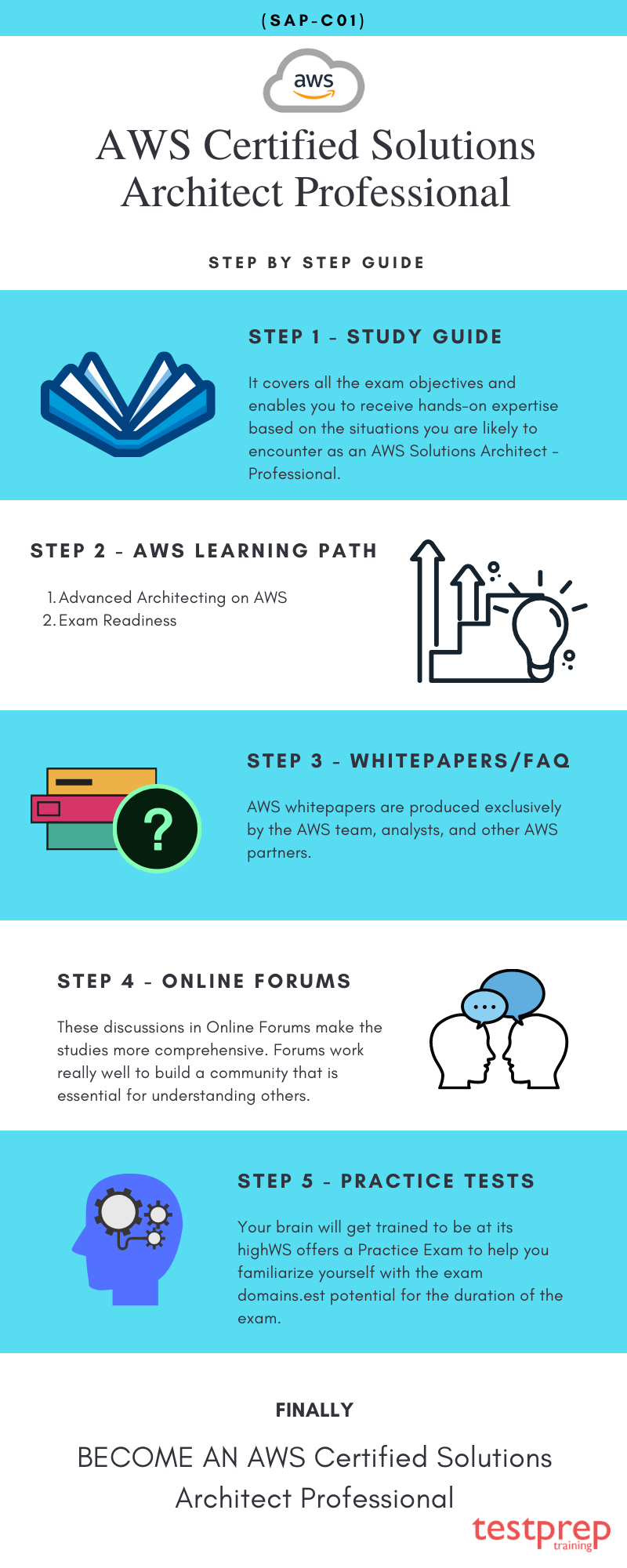
1. Official Study Guide
AWS provides a well-elaborate study guide, prepared and validated by AWS experts. This guide trains you to showcase your skills in networking in an examination setting. It covers all the exam objectives and enables you to receive hands-on expertise based on the situations you are likely to encounter as an AWS Solutions Architect – Professional. This AWS Certified Solutions Architect Professional Study Guide will assist you in internalizing the AWS processes and the best practices associated with AWS.
2. AWS Learning Path
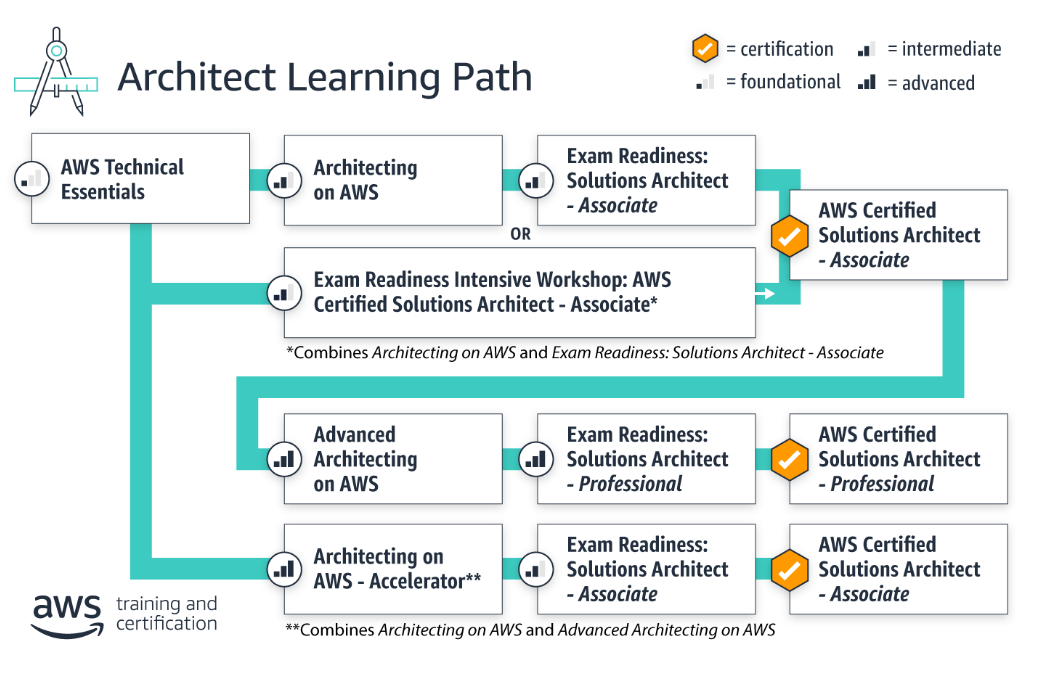
– Advanced Architecting on AWS
This 3-day course is designed by AWS experts for the candidates seeking to take this Professional Exam. This course will help you build a strong understanding of the concepts of AWS Architecting. You will gain expertise in building complex solutions, on the AWS platform, incorporating data services, governance, and security. This course will also train to achieve specialization in AWS services, including AWS Direct Connect and AWS Storage Gateway. These services support hybrid architecture. Most importantly, you will gain best practices for building scalable, elastic, secure, and highly available applications on the AWS platform.
– Exam Readiness
AWS offers Exam Readiness for the AWS Certified Solutions Architect Professional Training in three different formats –
- Classroom training – It is a physical or virtual classroom to train candidates with an AWS-accredited instructor
- Free digital training – It is an online training platform for candidates to schedule their sessions at their convenience.
- Free webinars – These webinars include presentations from AWS-accredited instructors. This is followed by a live Q&A session.
3. AWS Certified Solutions Architect Professional White Papers
AWS team offers several whitepapers, in order to enhance your technical knowledge. These whitepapers are produced exclusively by the AWS team, analysts, and other AWS partners. Here is a list of some highly recommended whitepapers by AWS
- Architecting for the Cloud: AWS Best Practices
- AWS Security Best Practices
- Amazon Web Services: Overview of Security Processes
- AWS Well-Architected Framework
- Development and Test on AWS
- Backup and Recovery Approaches Using AWS
- Amazon Virtual Private Cloud Connectivity Options
- How AWS Pricing Works
4. AWS FAQs
AWS team also provides many FAQs, to help you familiarize yourself with the common queries of other candidates, and professionals. Here is a list of some FAQs by AWS
For More Details See – AWS Solutions Architect Professional FAQ
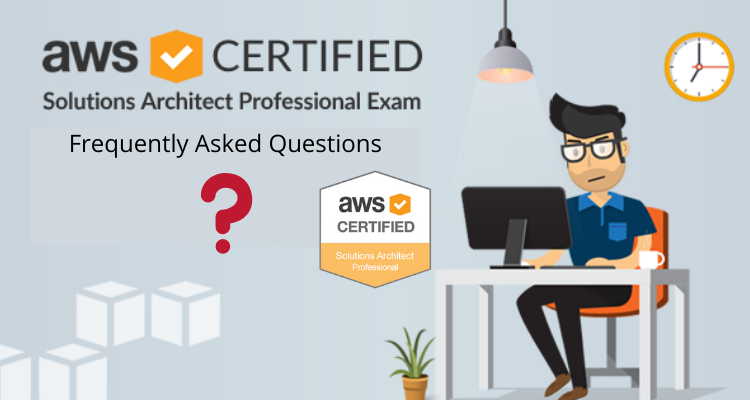
5. Join Online Forums
When a large number of people get involved in a problem, the chances of finding a solution grow dramatically. In addition, having different points of view makes the material more lively. The studies get more extensive as a result of these conversations in online forums. Introverts, who might otherwise avoid dialogues, get a chance to express themselves. Forums are excellent for forming a community that is necessary for understanding others.
6. Solve Practice Tests
AWS Certified Solutions Architect Professional Practice Exams help in various aspects. The more answers you get right in a practice paper, the more confident you’ll feel for the examination. Also, you will know exactly how much time and effort needs to be invested in a different section of the question paper. Your brain will get trained to be at its highest potential for the duration of the exam. All of these factors can make a huge difference. Remember, your result does not reflect how much you know, but how much you wrote. Talent can only be judged if it translates well in performance. AWS offers a Practice Exam to help you familiarize yourself with the exam domains.
So Level Up Your Expertise To Become An AWS Solutions Architect Professional
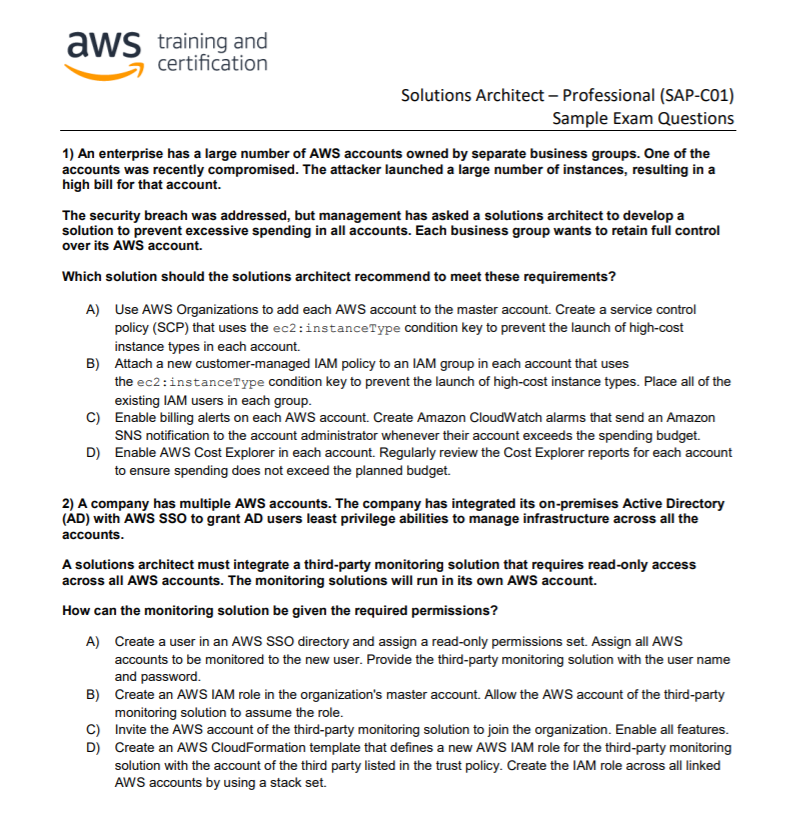
Table of Content
Introduction
- AWS Overview
- AWS security
- Elasticity and scalability in AWS
- VPC DNS
- Database and Replication
- Disaster Recovery
- Application Migration to AWS
AWS S3
AWS Route 53
Enterprise Account Management
- Consolidated Billing
- EC2 Reserved Instances
- Cross Account IAM
- Web Identity Federation
- SAML Federated Access
- Costing and Resource Tagging
AWS Key Management Service
Amazon Kinesis
Amazon EC2
- EC2 Volume Types
- CloudHSM
- AMIs
- Migrating EC2 Resources to Another Region
- EC2 Backup Strategies
- EC2 and HPC (High Performance Computing)
- EBS Raid Configurations
- Multi-Region Design
- Mitigating DDoS Attacks
Virtual Private Cloud (VPC)
- Network and Data Security in AWS
- VPC Flow Logs
- Using Directory Service
- Security Groups
- AWS IP Subnet Reservations
AWS Direct Connect
Amazon ElastiCache
Amazon RDS
High Availability and Elasticity

